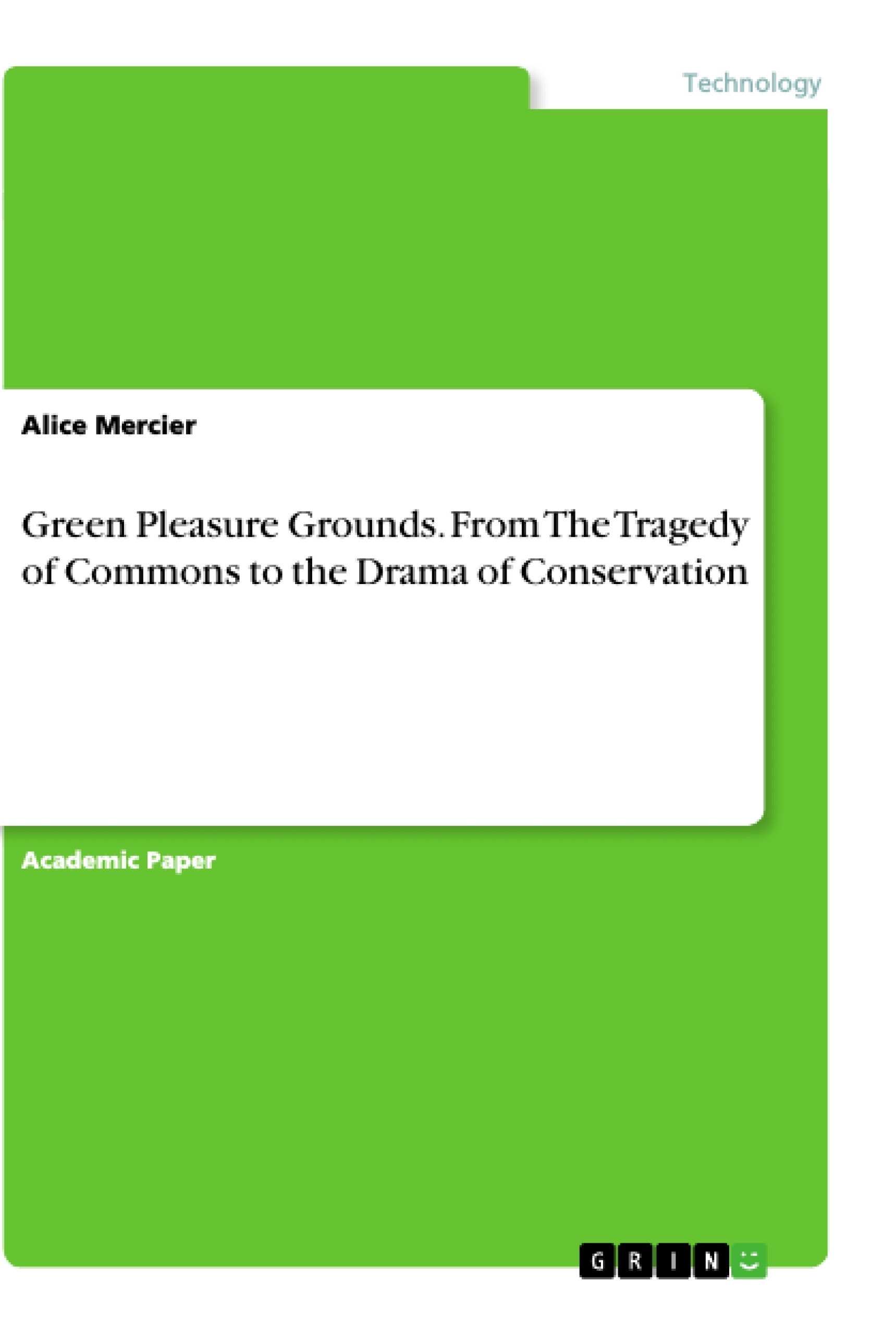This paper deals with the different aspects of the privatization of Natural Protected Areas. Being basically open to everyone with very few limitations on visitation, it is today widely acknowledged that Nature Protected Areas depict yet another example for the Tragedy of the Commons (ToC), and are subject to the associated risks. As every finite resource that is of growing interest for the growing mankind, natural resources are under the threat of exploitation and overuse.
A variety of measures have been discussed for decades in order to address this issue and to preserve our natural heritage. Under the current socio-politic settings, the most prominent but also the most controversially discussed solution strategy is the privatization of Protected Areas (PAs). To set the context we will give a glimpse on the historical development of recreational activities in PAs and explain which factors have contributed to its current popularity.
The general approaches of dealing with the issue of PAs being subject to the ToC are summarized, while focus is on the current fierce debate on privatizing parks and PAs. Major assumptions commonly resorted to by contestants are discussed in their cogency and socio-political context.
We argue that there is no magic solution to such a complex subject as PA management under increasing utilization pressure and conservation needs. Circumstances are to manifold to give a general answer to what are best management practices, so that decisions have to be made on a case to case basis. However, privatization is accompanied by high hazard risks that threaten to compromise the integrity of our common natural heritage and will likely change the associated objectives for the worse.
Inhaltsverzeichnis (Table of Contents)
- Introduction.
- Status Quo
- A Glimpse on the history of Natural Resource Recreation
- The Tragedy of the Commons.
- No Commons – No Tragedy, approaching Solutions...
- Privatization of Protected Areas.
- Increments
- Pros and Cons
- The Burden on the Taxpayer....
- Efficiency.
- Service provision& Commercialization
- Environmental Education, Conservation & other scientific tasks
- Vulnerability to market fluctuations
- Protected areas in today's socio-political context
- Conclusion; Balancing Reasons & Calculating Risks....
Zielsetzung und Themenschwerpunkte (Objectives and Key Themes)
This paper explores the challenges of managing Natural Protected Areas (PAs) under increasing visitor pressure and conservation needs. The text focuses on the rising popularity of ecotourism and its impact on the environment, examining the historical development of recreational activities in PAs. It delves into the controversial issue of privatizing PAs, analyzing the arguments for and against this approach, and the potential risks and benefits associated with it. The paper ultimately argues for a balanced approach, considering individual circumstances and avoiding a one-size-fits-all solution.
- The Tragedy of the Commons and its relevance to PA management.
- The impact of increasing visitor pressure on PAs and natural resources.
- The debate surrounding the privatization of PAs, including its potential benefits and risks.
- The socio-political context influencing PA management decisions.
- The need for a balanced approach to PA management that considers individual circumstances.
Zusammenfassung der Kapitel (Chapter Summaries)
- Introduction: This chapter sets the stage for the discussion by introducing the concept of the Tragedy of the Commons and its application to PAs. It highlights the growing popularity of ecotourism and the need for effective PA management strategies. The chapter also establishes the focus of the paper on the controversial issue of PA privatization.
- Status Quo: This chapter provides a historical overview of the development of recreational activities in PAs, emphasizing the factors that have contributed to their increasing popularity. It further explores the general approaches to addressing the challenges posed by the Tragedy of the Commons in PAs.
- Privatization of Protected Areas: This chapter delves into the pros and cons of privatizing PAs, examining the potential benefits such as increased efficiency and service provision, as well as the associated risks, including vulnerability to market fluctuations and the potential for commercialization. The chapter also considers the implications of privatization within the current socio-political context.
Schlüsselwörter (Keywords)
The key terms and concepts central to this text are: Natural Resource Recreation, Protected Areas, Ecotourism, Tragedy of the Commons, Privatization, Conservation, Sustainable Management, Socio-political Context.
- Arbeit zitieren
- Alice Mercier (Autor:in), 2010, Green Pleasure Grounds. From The Tragedy of Commons to the Drama of Conservation, München, GRIN Verlag, https://www.grin.com/document/914039



